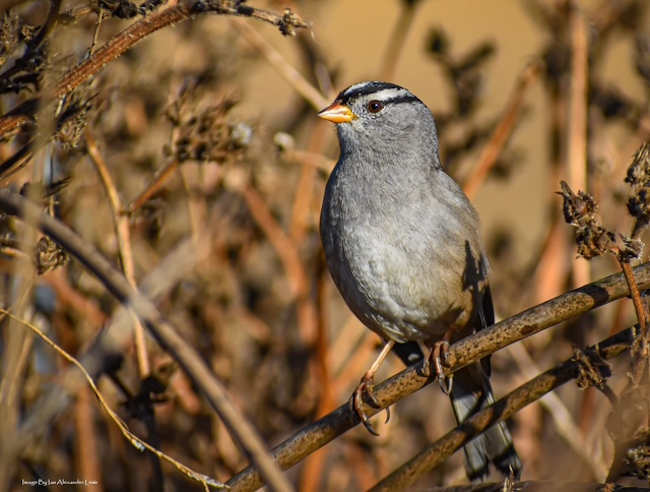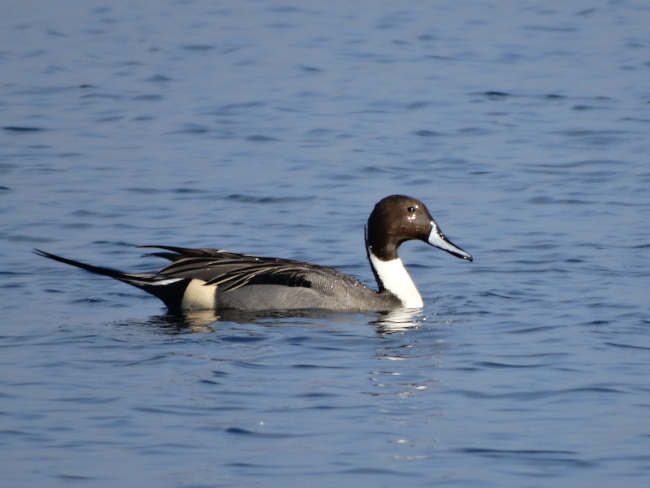
NORTHERN CALIFORNIA — Fall is my favorite season in the Berryessa Snow Mountain National Monument region, but not for the usual reasons.
It’s not the spiced lattes or the leaves changing colors, although those are nice too. The reason I love autumn so much in Northern California is because of the birds.
As temperatures finally start to cool, like clockwork, the birds come by the thousands to enjoy our comfortable and temperate winter weather.
Here in the valley, we are located along a major bird migration route called the Pacific Flyway. The Pacific Flyway spans 4,000 miles north to south from Alaska to Patagonia. More than 350 species of birds migrate every year using the Pacific Flyway.
According to the Sacramento Audubon Society, at least one billion birds migrate through the Sacramento region annually. Birds migrate south to our little corner of the Pacific Flyway from as far north as Canada and Alaska. For some birds, our valley floor is the final destination of their migratory route; for others, we are a rest stop on their way further south.
Birds begin to migrate when the days begin to shorten, and temperatures start to cool in their northern habitats. With the change in seasons, they see a reduction in the availability of their food sources, which are primarily insects, berries and aquatic plants. Migration offers a way to find more ample food and milder temperatures.
In the Sacramento Valley, the Northern Pintail (Anas acuta) is the harbinger of fall migration, arriving as early as August. Later, you may be lucky enough to hear the Sandhill Cranes (Antigone canadensis), whose loud calls can be heard up to a mile away.
During the fall, if you visit one of our area’s beautiful wetlands, you can see American Avocets, Horned Larks, Green-Winged Teals, American Widgeons, Long-Billed Curlews, and Merlins, to name just a few. In your yard you might enjoy watching White Crowned Sparrows, Hermit Thrushes, Dark Eyed Juncos, Western Tanagers, Townsend’s Warblers, and many more.
The idea of bird migration often brings to mind geese flying in V formation, which is an impressive feat. What I think is even more astounding is that tiny bird species like sparrows, warblers and hummingbirds also migrate, and compared to their size, the distances that they travel are nothing short of amazing.
Rufous hummingbirds (Selasphorus rufus) for example, which measure only about 3 inches in length, fly roughly 3,900 miles one way from Alaska to Mexico.
According to the website All About Birds, this journey is equivalent to 78 million body lengths for this tiny bird. Compare that to another impressive long-distance migrator, the 13-inch-long Arctic Tern that flies a mind boggling 11 thousand miles one way from Alaska to Antarctica, which is just 51 million of its body lengths.
Scientists still don’t fully understand how birds are able to migrate, but over the last few decades there have been some fascinating findings on the topic. Studies have shown that birds use the night sky and positioning of the stars, chiefly Polaris (the North Star) to navigate. On cloudy nights when stars are less visible, birds seem to wait for better visibility.
Many birds have a small amount of magnetite in their upper beak, a magnetic mineral that serves as a sort of internal compass.
Bird eyes contain a protein called cryptochrome that allow them to see the Earth’s magnetic field, and birds are thought to create what scientists call a mental map of the world around them.
Additionally, while historically it was thought that birds navigate solely based on instinct, recent studies have shown that juvenile birds seem to learn migration skills and routes from other birds.
Since birds tend to use the same migration route each year, ornithologists can often predict the day that a specific species will arrive in a given place along the flyway, which is great news if you enjoy watching birds.
Tools such as Birdcast can show you how many birds are expected to be migrating on a given day, including live updates. You might consider using a nature journal or a community science tool like eBird to record when your favorite species arrive in your yard, and in doing so, help scientists track this magnificent natural wonder.
While along the migratory path, birds face countless challenges. It is a dangerous and arduous journey, and many birds do not make it to their final destination due to difficult weather conditions, predation, exhaustion, or starvation along the way.
Human-related obstacles have also made this journey more difficult. These include habitat loss, inadequate food supply at resting stops, changing weather patterns, predation by house cats, hunting, and in recent years, commercial and residential light pollution and collisions with windows and tall buildings.
There are many things that you can do to help birds along their journey. Make your yard a good waystation along their travels. Leaf litter provides hiding places for insects that birds need to refuel, so “leave the leaves.” Plant native plants that provide seasonal habitat and berries for birds. Avoid using pesticides as they reduce the supply of birds’ primary food source: insects.
Turning off unnecessary lights outside can also have a big impact on birds who can be confused by artificial lighting along their migration route. Prevent window collisions by placing protective decals on the outside of your windows.
The fall bird migration serves as a reminder of the interconnectedness of our beautiful planet and the way that we are all part of a larger world. Tending gently to our little corner of the world benefits not just us, but also travelers along their epic journeys.
The most fun thing you can do to help birds is to learn about them and love them. We protect what we love. So, get out there and enjoy those fall birds!
Diana Drips is a Certified California Naturalist. Tuleyome is a 501(c)(3) nonprofit conservation organization based in Woodland, California. For more information go to www.tuleyome.org.


 How to resolve AdBlock issue?
How to resolve AdBlock issue? 



